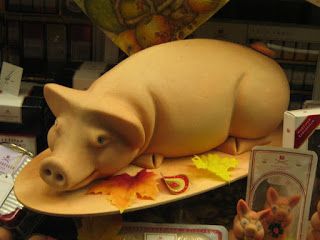- The word marzipan is often said to derive from panis martius or marzapane, i.e., March Bread. There are a couple of other possibilities, though. One is that it comes from the Italian words for Pastry and bread. Another is that it derives from the Persian word for border guardian. Yet another is that it derives from an Arabic word, mawthābān, meaning "king who sits still". This word was used to describe a Venetian coin depicting Christ on a throne, which would be kept in an ornate box. When the coins fell out of circulation people found other uses for the boxes, such as putting luxury sweets in them. Like marzipan.
- Like the word, there is dispute about the origin of the product itself. Spain, Hungary and Italy all claim to have invented it; although it also seems likely it was introduced to Europe from Turkey and the Middle East. There is also a theory that it originated in China and spread throughout the world via the Silk Road.
- Marzipan is made from three basic ingredients: ground almonds, sugar or honey, and egg. It can be flavoured with vanilla, cinnamon, nutmeg, Orange, Lemon or Lime zest or rosewater.
- In the Middle Ages, marzipan was medicine. Pharmacists recommended it to treat various disorders, both physical and mental. In Venice, it was moulded into the shape of loaves of bread and given out to prevent people from getting the plague.
- While it seems unlikely marzipan would be effective against plague, it does contain lecithin, known to stimulate nerve cell activity and has been recommended as an energy food for people engaged in hard work. There's also a lot of sugar in it so there could be an energy boost from that.
- In the fifteenth and sixteenth centuries, marzipan was a luxury only the very rich could afford. Queen Elizabeth I is said to have been a big fan.
- The highest quality marzipan is produced in Lübeck in Germany and Tallinn, Estonia.
- It gets a few mentions in literature. Shakespeare mentions the word marchpane in Romeo and Juliet. There are also mentions in The Book of One Thousand and One Nights of an Almond paste which was eaten during Ramadan and was also an aphrodisiac.
- In the UK, possibly the most common use for marzipan is in cake icing. Adding a marzipan layer to a fruit cake has a couple of functions. It provides a flat base to apply the icing and also stops moisture from the cake from staining the icing.
- In several European countries, marzipan is a traditional Christmas food – Spain, Italy, Denmark and Norway among them. In Italy, they also eat it on All Souls Day (November 2) and in Scandinavia marzipan eggs are eaten at Easter.
I write fiction, too! My characters include some British superheroes and a psychic detective. You never know, your new favourite could be here! You won't know unless you look...
Browse other topics I've covered in this blog - HERE.
Like my Facebook page for news of Topical Ten posts, posts on my writing blog, and news of upcoming publications. |


No comments:
Post a Comment